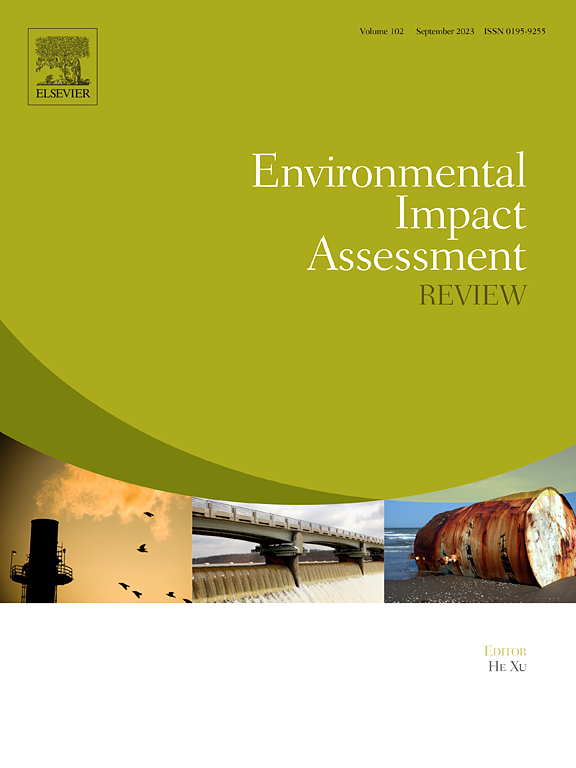Physiological adaptability of livestock to climate change: A global model-based assessment for the 21st century
IF 11.2
1区 社会学
Q1 ENVIRONMENTAL STUDIES
引用次数: 0
Abstract
Rising global temperatures and the growing world population create a paradox that compromises food security and hinders efforts to achieve the Sustainable Development Goals (SDGs) of zero hunger and climate action by 2030 Agenda. Global-scale studies are necessary to assess climate change scenarios in the livestock industry. Meteorological data and adaptive responses of animals reared in different countries around the world were used to show that animals in the thermal environment of the Northern Hemisphere must display a wider range of thermoregulatory responses than animals in the Southern Hemisphere. Subsequently, future climate simulations were performed based on conservative IPCC RCP4.5 climate models to project the impact of climate change on physiological responses of sheep, goats, dairy and beef cattle, pigs, poultry and quails, and identify key traits to strengthen the adaptative response to future climatic conditions. Results showed that ruminant animals in the Northern Hemisphere will be most impacted by climate change in the three climate scenarios of 2050, 2075, and 2100, with a predicted increase in respiratory rate of up to 68 % compared to animals in the Southern Hemisphere. Ruminant animals reared in the Southern Hemisphere will increase their rectal temperature as an adaptive response to climate change. It was also found that dairy cattle farming will be the most susceptible activity to heat stress in the coming decades in the Southern Hemisphere, and goats and beef cattle are the animals that will be less impacted by climate change due to phenotypic plasticity. Quails and laying hens will be the most susceptible animals to climate change, with respiratory rates expected to increase by up to 40 beats per minute by 2100. It is concluded that the adoption of animal adaptability protocols is becoming an increasingly relevant topic in livestock production systems in the Northern Hemisphere, with ongoing efforts to develop breeds and lines of domestic animals more resistant to heat stress and diseases, especially using resources locally adapted to the conditions of the Southern Hemisphere, where strategies should be based on the selection and crossbreeding to increase animal production and ensure food security for the growing population by the end of the century. For the poultry industry, intensifying the production system is needed and urgent since animals will not withstand high temperatures in systems with no environmental enrichment strategies. Finally, the conservation of locally adapted genetic resources will be essential to preserve biodiversity, strengthen ecosystem resilience, and address food security challenges in the face of climate change.

牲畜对气候变化的生理适应性:21世纪全球模式评估
全球气温上升和世界人口不断增长形成了一个悖论,既危及粮食安全,又阻碍了到2030年实现零饥饿和气候行动的可持续发展目标。全球尺度的研究对于评估畜牧业的气候变化情景是必要的。利用世界各地不同国家饲养的动物的气象数据和适应性反应表明,北半球热环境中的动物必须比南半球的动物表现出更广泛的温度调节反应。随后,基于保守的IPCC RCP4.5气候模型进行了未来气候模拟,预测了气候变化对绵羊、山羊、奶牛和肉牛、猪、家禽和鹌鹑生理反应的影响,并确定了加强对未来气候条件的适应反应的关键性状。结果表明,在2050年、2075年和2100年三种气候情景下,北半球反刍动物受气候变化的影响最大,与南半球动物相比,预计呼吸速率将增加68%。在南半球饲养的反刍动物会提高它们的直肠温度,作为对气候变化的适应性反应。研究还发现,在未来几十年,奶牛养殖将是南半球最容易受到热应激影响的活动,而山羊和肉牛由于表型可塑性而受气候变化影响较小。鹌鹑和蛋鸡将是最容易受到气候变化影响的动物,到2100年,它们的呼吸频率预计将增加到每分钟40次。结论是,在北半球畜牧业生产系统中,采用动物适应性协议正成为一个日益相关的主题,目前正在努力开发更能抵抗热应激和疾病的家畜品种和品系,特别是利用适合南半球条件的当地资源。战略应以选择和杂交为基础,以增加动物产量,并确保到本世纪末不断增长的人口的粮食安全。对于家禽业来说,迫切需要强化生产系统,因为在没有环境富集策略的系统中,动物无法承受高温。最后,在气候变化的背景下,保护适合当地的遗传资源对于保护生物多样性、增强生态系统抵御力和应对粮食安全挑战至关重要。
本文章由计算机程序翻译,如有差异,请以英文原文为准。
求助全文
约1分钟内获得全文
求助全文
来源期刊

Environmental Impact Assessment Review
ENVIRONMENTAL STUDIES-
CiteScore
12.60
自引率
10.10%
发文量
200
审稿时长
33 days
期刊介绍:
Environmental Impact Assessment Review is an interdisciplinary journal that serves a global audience of practitioners, policymakers, and academics involved in assessing the environmental impact of policies, projects, processes, and products. The journal focuses on innovative theory and practice in environmental impact assessment (EIA). Papers are expected to present innovative ideas, be topical, and coherent. The journal emphasizes concepts, methods, techniques, approaches, and systems related to EIA theory and practice.
 求助内容:
求助内容: 应助结果提醒方式:
应助结果提醒方式:


